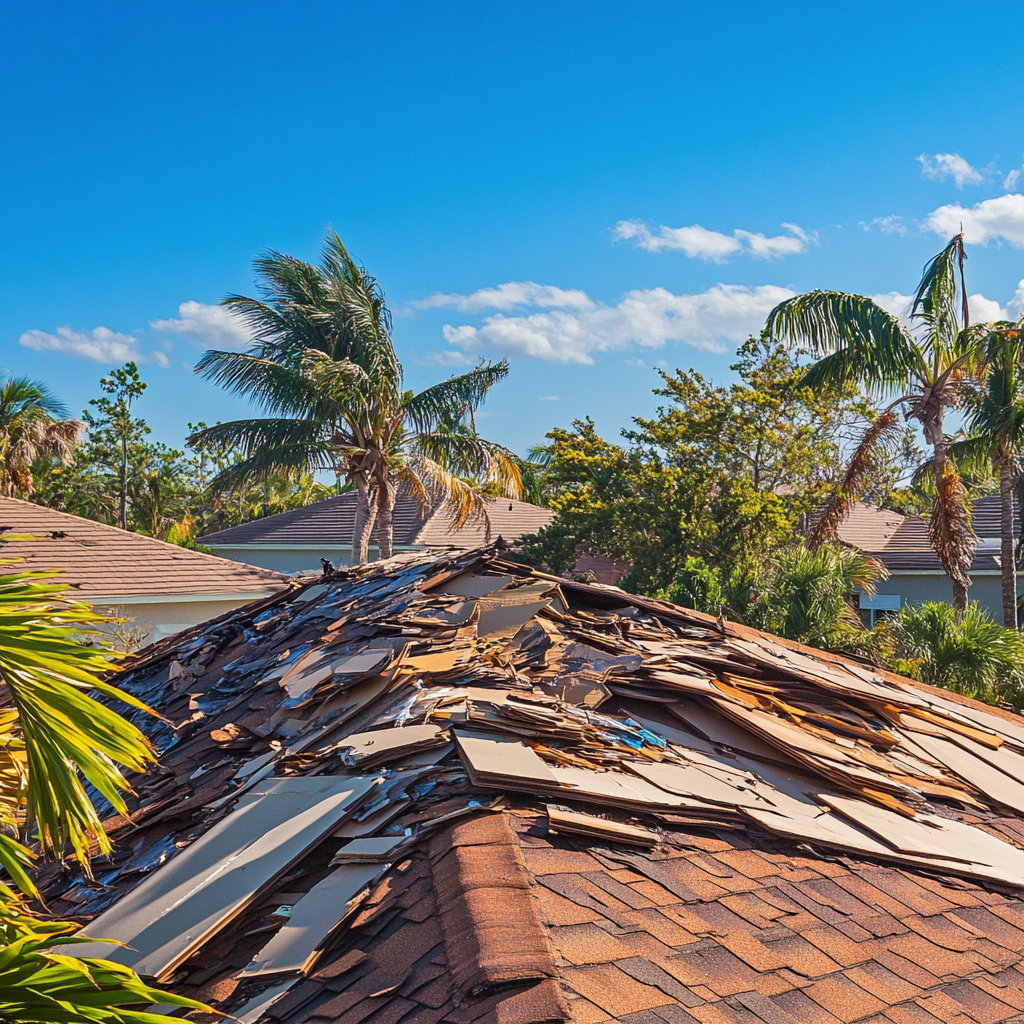In New Smyrna Beach, hurricane season brings heavy rains and high winds that can leave even the sturdiest roofs vulnerable to leaks. Addressing roof leaks promptly after a hurricane is crucial for preventing further damage to your home’s structure. In this guide, Roofer New Smyrna explains how to identify roof leaks, what causes them, and the steps you should take to repair them safely.

1. Common Causes of Roof Leaks After Hurricanes
Understanding what typically causes roof leaks after a storm helps homeowners know what to look for. Here are some of the main culprits:
a) Damaged Shingles
Hurricane winds can easily lift or break shingles, especially if they are already weakened or aging. Missing, cracked, or curling shingles expose the underlying layers of your roof, allowing water to seep through.
b) Faulty Flashing
Flashing around roof penetrations like chimneys, vents, and skylights can become loose or bent during a storm, leading to gaps where water can enter. Damaged flashing is a frequent cause of leaks after hurricanes.
c) Debris Impact
Branches, leaves, and other debris blown onto the roof can cause punctures or leave small openings that allow water to infiltrate. Debris can also trap moisture, accelerating roof material deterioration.
d) Clogged Gutters and Downspouts
Blocked gutters prevent water from draining properly, causing it to back up and pool on your roof. This pooling can lead to leaks, especially in areas where shingles or flashing may be compromised.
2. How to Identify Roof Leaks After a Hurricane
Detecting roof leaks early on can save you from extensive (and costly) repairs. Here’s how to inspect for leaks effectively:
a) Look for Water Stains Indoors
Check your ceilings and walls for yellowish or brown stains, which are often telltale signs of roof leaks. If you find stains, trace them back to their highest point—this is usually close to the source of the leak.
b) Inspect the Attic
Water that seeps through the roof often travels to the attic first. Use a flashlight to look for signs of dampness, mold, or water pooling on the attic floor.
c) Check for Musty Smells
Mold and mildew thrive in moist environments, so if your home has a musty smell after a hurricane, it could indicate a hidden roof leak.
d) Observe the Roof from the Ground
Without climbing up, look at your roof from a safe distance for visible damage, such as missing shingles, sagging areas, or damaged flashing around roof features.
3. Steps to Take When You Find a Roof Leak
Once you’ve identified a leak, it’s essential to address it quickly. Here are the key steps to take:
a) Contain the Leak Indoors
If water is dripping inside your home, place a bucket under the leak to catch water and protect your floors. Move furniture and belongings out of the affected area if possible.
b) Tarp the Roof (If Safe to Do So)
If you have access to a tarp and can safely reach the roof, covering the damaged area with a tarp can help prevent further water entry until professional help arrives. Ensure the tarp is tightly secured to withstand any wind or rain.
c) Document the Damage
Take photos of the leak and any visible roof damage. This documentation is helpful for insurance claims and also provides a clear record for roofing professionals.
d) Call a Roofing Professional
Roof leaks often require a trained eye to locate and repair. Roofer New Smyrna offers emergency leak repair services and can help restore your roof to top condition, protecting your home from additional water damage.
4. Preventative Measures for the Future
Once your roof has been repaired, there are steps you can take to reduce the risk of leaks during future storms:
- Schedule regular roof inspections: A professional inspection can identify weak spots and repair minor issues before they turn into major problems.
- Clean your gutters regularly: Keeping gutters free of debris will ensure proper drainage, preventing water buildup.
- Trim overhanging branches: Reducing the chance of debris falling on your roof can lower the likelihood of impact damage.
- Consider impact-resistant materials: When it’s time for a roof replacement, ask about impact-resistant shingles that can better withstand hurricane conditions.
Why Choose Roofer New Smyrna?
At Roofer New Smyrna, we specialize in hurricane-related roof repairs and leak prevention. Our team is equipped to handle everything from emergency leak repair to full roof inspections, ensuring your home is protected from Florida’s harsh weather.
- Experienced Leak Detection: We know where to look for hidden leaks and how to address them before they cause extensive damage.
- High-Quality Repairs: Our repairs are designed to withstand New Smyrna Beach’s stormy seasons, giving you peace of mind.
- Fast Response: After a hurricane, time is of the essence. We provide prompt service to prevent further damage to your home.
Don’t let a roof leak turn into a major problem. Call Roofer New Smyrna today for a thorough inspection and expert repair services to keep your home safe and dry.